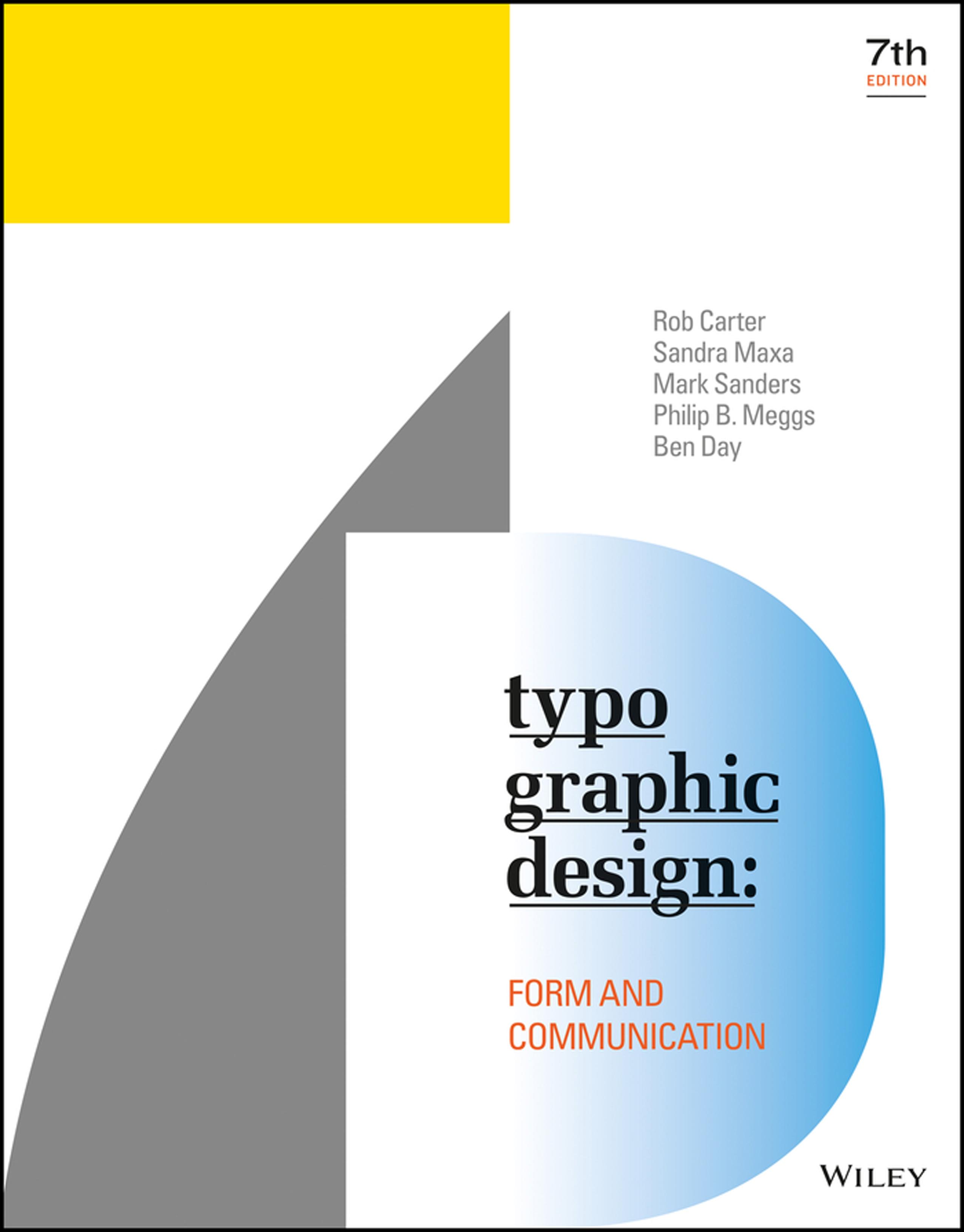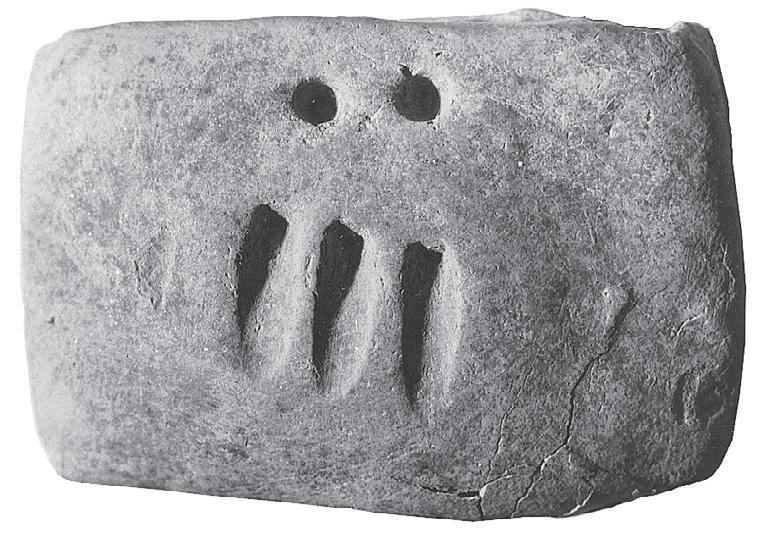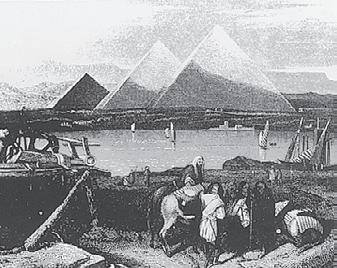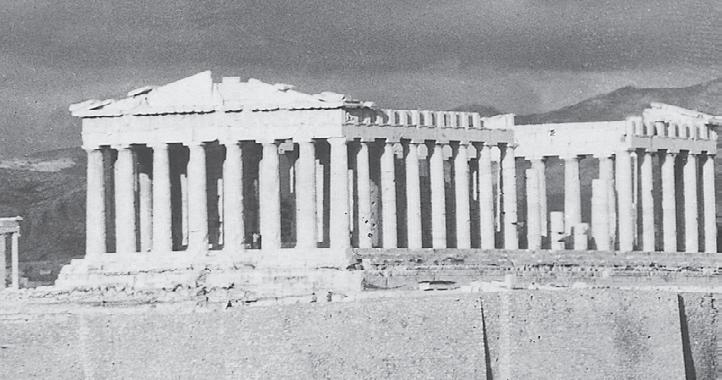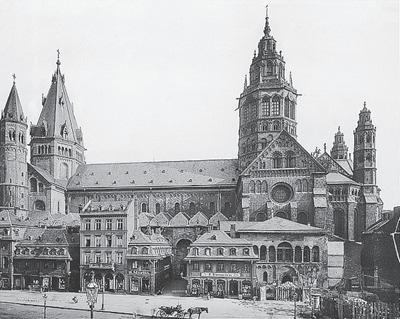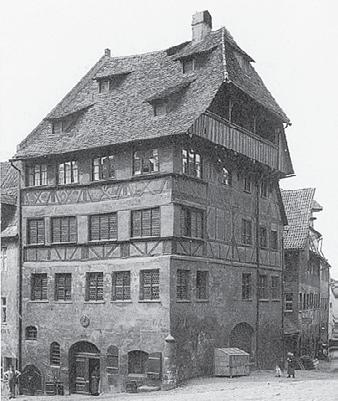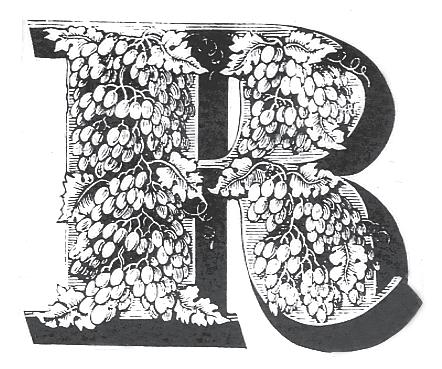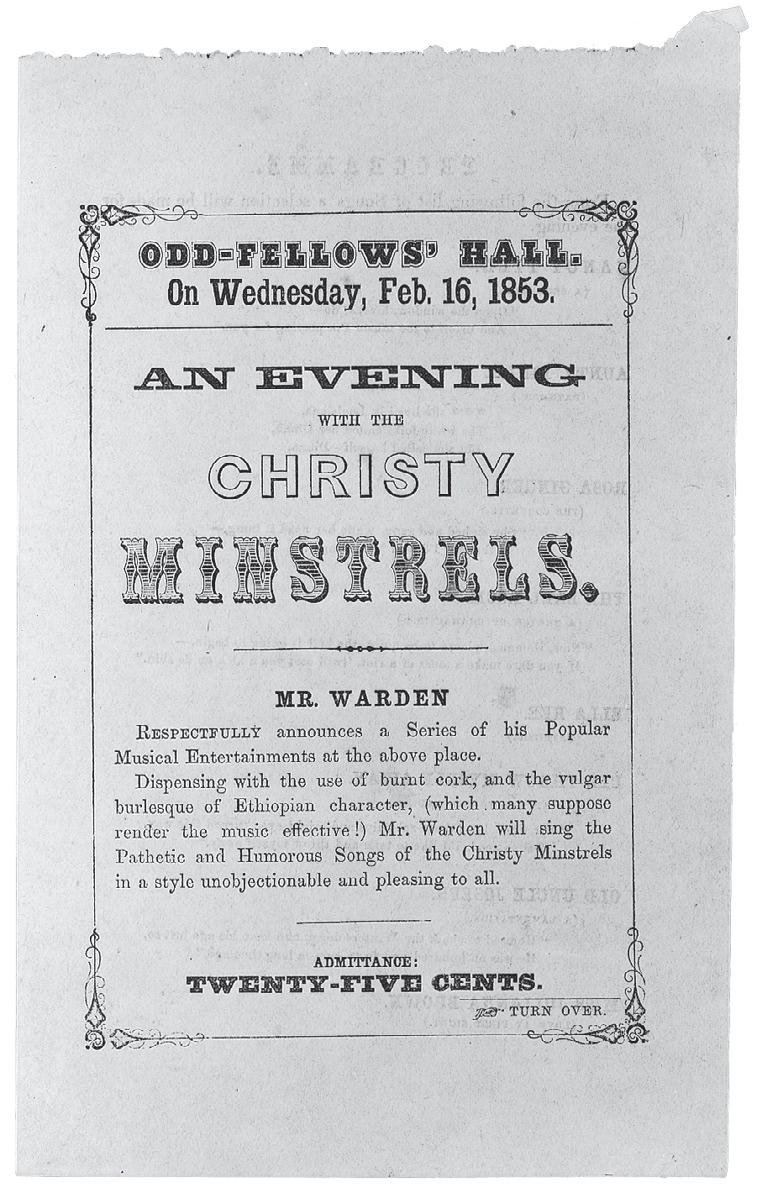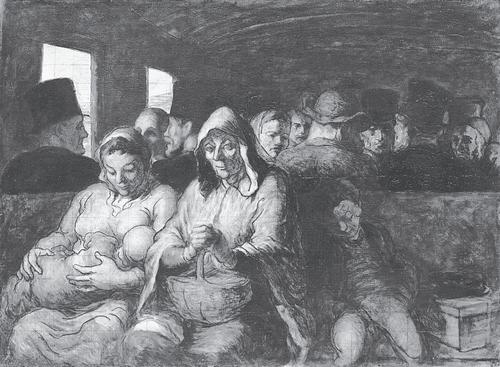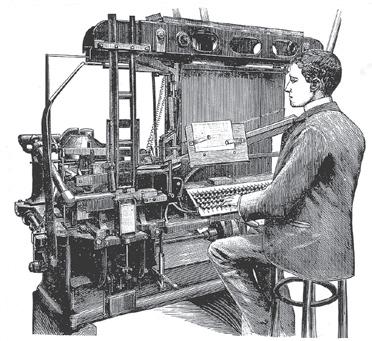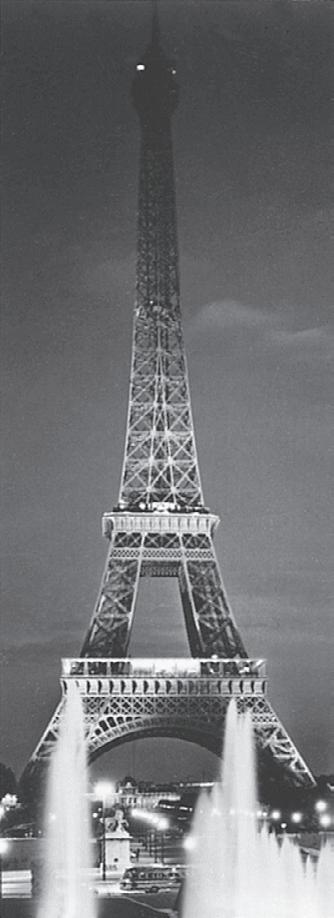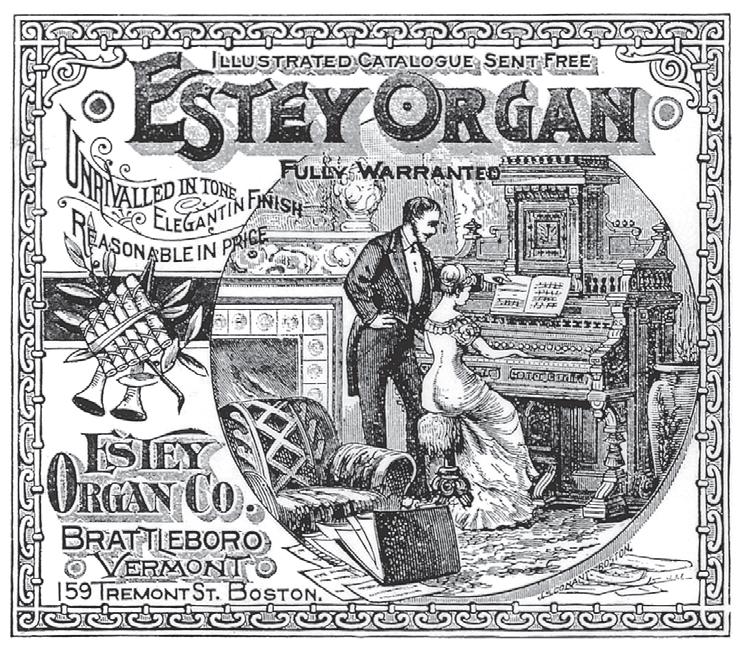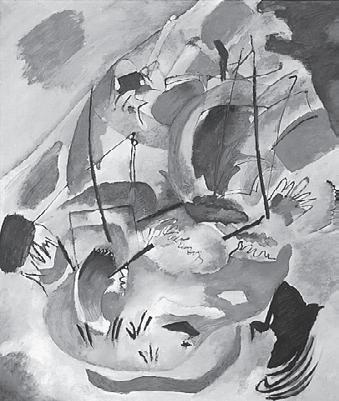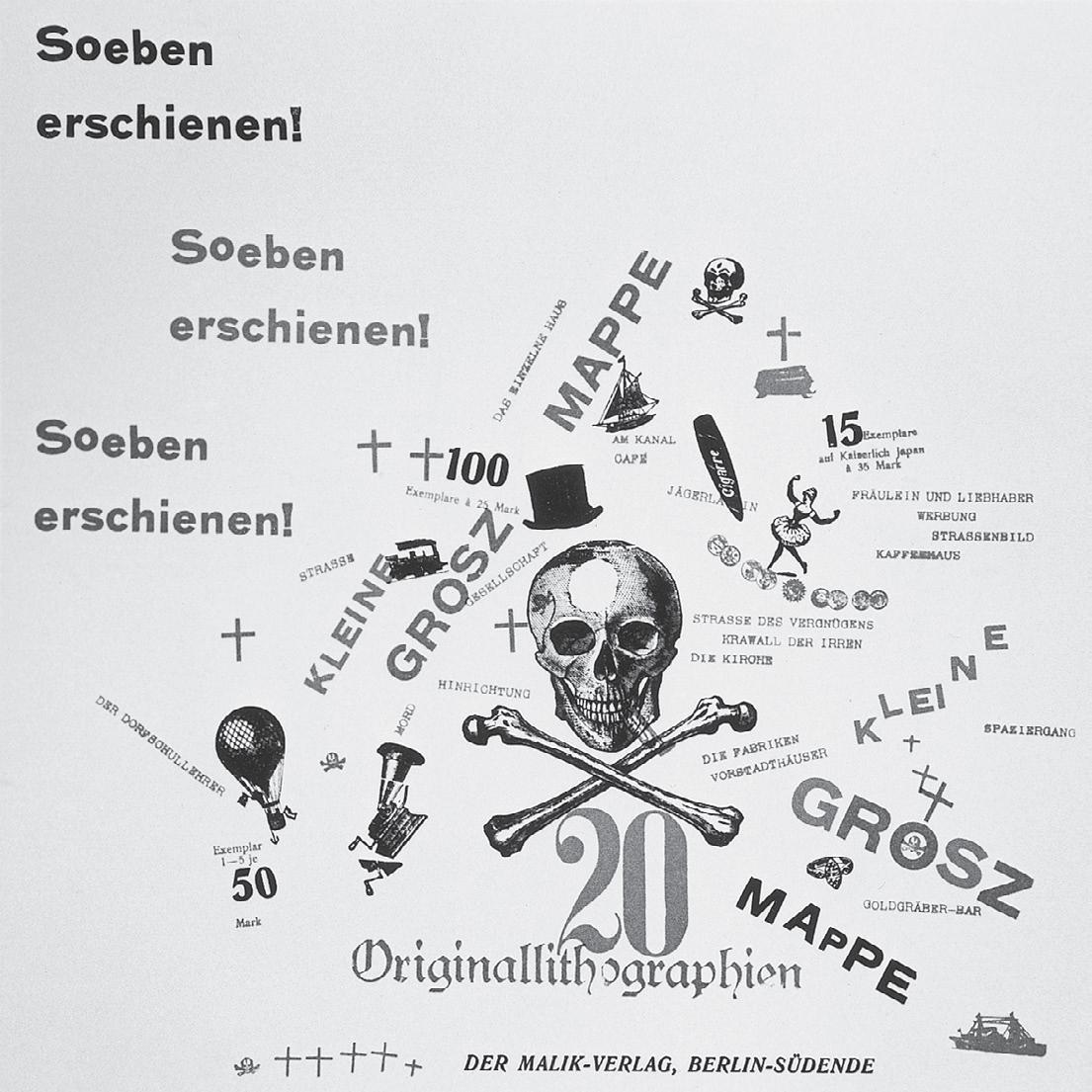The Evolution of Typography
Typography is an evolution of the written word, and as such it participates in a history of visual communication extending thousands of years. That evolution is presented here in the form of a timeline that traces a development from hand, to mechanical, to digital practice, in the context of world-historical and art-historical events.
The history treated in the first section of the timeline predates typography. It begins with the invention of writing over five thousand years ago and ends with the invention of movable type in Europe during the middle of the fifteenth century. The second section covers the long era of the handpress and hand-set metal types. This period, from Gutenberg’s invention of movable type to the end of the eighteenth century, lasted about 350 years. In the third section, the Industrial Revolution and nineteenth century are revealed as an era of technological innovation and an outpouring of new typographic forms. The fourth section begins with the year 1900 and covers the twentieth century, a time when type was shaped by the aesthetic concerns of modernism, the need for functional communication, technological progress, and the digital revolution in typography. The final section showcases typographic design in the twenty-first century, as it expands to mobile devices and embraces the many possibilities afforded by digital production.
From the origins of writing to Gutenberg’s invention of movable type: 3150 BCE–1450 CE
c. 3150 BCE
1-1 c. 3150 BCE : The earliest written documents, impressed clay tablets from Sumer. The impressions represent clay tokens, which were used for record keeping before the invention of writing.
1-2 c. 3000 BCE : Cuneiform, a very early writing system utilizing wedge-shaped marks on clay tablets, was invented by the Sumerians.
c. 2500 BCE : Egyptians begin to make papyrus, a new writing material derived from the stems of the papyrus plant.
1-3 c. 2600 BCE : Completion of the pyramids at Giza, Egypt.
1-4 c. 2400 BCE : Falsedoor stele inscribed with hieroglyphic writing, from Old Kingdom Egypt.
1-6 c. 1800–1400 BCE : Stonehenge, a megalithic monument of 30-foot-tall stones set into circular patterns.
1-5 c. 2100 BCE : Cuneiform tablet listing expenditures of grain and animals.
1-7 c. 1570–1349 BCE : Polychromed wood sculpture from New Kingdom Egypt, with hieroglyphic inscriptions.
1-8 c. 1450 BCE: Detail, The Book of the Dead of Tuthmosis III, hieroglyphic writing on papyrus.
1500 BCE
1-9 c. 1500 BCE : The twenty-two characters of the Phoenician alphabet.
c. 800 BCE : Homer writes the Iliad and the Odyssey.
540 BCE : The first public library is established in Athens, Greece.
1-10 389 BCE : Inscription in the Phoenician alphabet on a fragment of a marble bowl.
1-11 Fourth century BCE: Greek manuscript writing.
1-12 448–432 BCE : The Parthenon, temple of the goddess Athena, on the Acropolis in Athens, Greece.
1-13 414–413 BCE : Fragment of a Greek record of sale, carved on stone.
c. 160 BCE : Parchment, a new writing material made from animal skins, is developed in the Greek state of Pergamum.
44 BCE : Julius Caesar is murdered.
1-14 c. 50 BCE –500 CE : Roman square capitals (capitalis quadrata) were carefully written with a flat pen.
c. 33 CE : Crucifixion of Christ.
1-15 c. 79 CE : Brush writing from a wall at Pompeii, preserved by the volcanic eruption of Vesuvius.
105 CE : Ts’ai Lun invents paper in China.
150 CE: The Roman codex, with folded pages, begins to be used alongside the rolled scroll.
1-16 c. 100–600: Roman rustic writing (capitalis rustica) conserved space by using condensed letters written with a flat pen held in an almost vertical position.
c.
1-17 118–25: The Pantheon, Rome.
1-18 Undated:
The fluid gestural quality, harmonious proportions, and beautiful forms of Roman writing are effectively translated into the permanent stone carving of monumental capitals (capitalis monumentalis).
1-19 312–15: Arch of Constantine, Rome. Carved into marble, monumental Roman capitals survived the thousand-year Dark Ages.
325: Emperor Constantine adopts Christianity as the state religion of the Roman Empire.
c. 400–1400: During the thousand-year medieval era, knowledge and learning are kept alive in Christian monasteries, where manuscript books are lettered in scriptoria.
452: Attila the Hun invades and ravages northern Italy.
476: Emperor Romulus Augustulus, last ruler of the western Roman Empire, is deposed by the Ostrogoths.
1-20 533–49: Church of Sant’Apollinare in Classe, Ravenna, Italy.
1-21 Third–sixth centuries: Uncials are rounded, freely drawn majuscule letters.
1-22 Third–ninth centuries: Half-uncials, a lettering style of the Christian Church, introduce pronounced ascenders and descenders.
1-23 Sixth–ninth centuries: Insular majuscules, a formal style with exaggerated serifs, are developed by Irish monks from the half-uncials.
732: The Battle of Tours ends the Muslim advance into Europe.
800: Charlemagne is crowned emperor of the Holy Roman Empire by Pope Leo III.
1-24 c. 800: Portrait of Christ from the Book of Kells, a Celtic manuscript.
868: The earliest extant printed text, of the Diamond Sutra, is printed in China.
1-25 Tenth century: High Cross at Kells, Meath County, Ireland.
1-26 c. Eleventh century: Round tower on the Rock of Cashel, county Tipperary, Ireland, a lookout and refuge against Viking invaders.
1-27 Eighth–twelfth centuries: Caroline minuscules become the standard throughout Europe after Charlemagne issues his reform decree of 796, calling for a uniform writing style.
1034: Bi Sheng (Pi Sheng) invents movable type in China.
1096–99: The First Crusade.
1-28 1163–1250: Construction of Notre Dame Cathedral, Paris.
1-29 Eleventh–twelfth centuries: Early Gothic lettering, a transitional style between Caroline minuscules and Textura, has an increased vertical emphasis.
1-30 Twelfth century: Bronze and copper crucifix from northern Italy.
1215: The Magna Carta grants constitutional liberties in England.
1-31 Thirteenth–fifteenth centuries: Gothic Textura Quadrata, or Textura, the lateGothic style with rigorous verticality and compressed forms.
1347–51: First wave of the Black Death, a plague that decimates the European population.
1-32 Thirteenth century: Byzantine school, Madonna and Child on a Curved Throne.
1-33 Thirteenth–fifteenth centuries: Rotunda, a more rounded Gothic letter, flourishes in southern Europe.
1-34 Fourteenth century: Lippo Memmi, Saint John the Baptist.
1-35 1420–36: Filippo Brunelleschi, dome of Florence Cathedral.
1431: Joan of Arc is burned at the stake.
1-36 Fifteenth century: First page of a block book, the biblical book of Apocalypse (Revelation). Woodblock printing probably appeared in Europe before 1400.
1-37 Fra Filippo Lippi, Madonna and Child.
c. 1450: Johann Gutenberg invents movable type in Mainz, Germany.
1-34
1-38 c. 1450–55: Page from Gutenberg’s fortytwo-line Bible, the first European typographic book.
1-39 Woodblock print of the hand printing press, with compositors setting type from a typecase in the background.
1-40 The cathedral in the medieval city of Mainz, Germany.
Typography from Gutenberg to the nineteenth century: 1450 –1800
The humanist philosophy that flowered during the Renaissance embraced the study of classical literature, a belief in human dignity and worth, a spirit of individualism, and a shift from religious to secular concerns.
1-41 1465: Germans Konrad Sweynheym and Arnold Pannartz design the first type in Italy. It had some Roman features.
1-42 1467: Konrad Sweynheym and Arnold Pannartz, the first truly Roman-style type, influenced by Roman inscriptional capitals and manuscripts written in Caroline minuscules.
1-43 1470: Nicolas Jenson, early Venetian roman typeface.
1-44 1475: William Caxton, typography from the first book printed in the English language
1-45 c. 1485: Filippino Lippi, Portrait of a Youth.
1-46 1486: Erhard Ratdolt, the earliest known specimen sheet of printing types.
1492: Christopher Columbus lands in America.
1-47 c. 1494: Scholar and printer Aldus Manutius established the Aldine Press in Venice to publish works by the great Greek and Roman thinkers.
1-48 1495: Francesco Griffo (punch cutter for Aldus Manutius), roman type first used in De aetna by Pietro Bembo.
1- 49 1501: Francesco
Griffo, the first italic typeface, based on chancery script handwriting.
1-50 Home of Albrecht
Dürer, Nuremberg, Germany.
1-51 Woodblock initial by Geoffroy Tory, who returned to France from study in Italy in 1505, inspired by Roman letterforms and Renaissance design ideals.
1517: Martin Luther posts his ninety-five theses on the door of Wittenberg Castle Church, launching the Reformation.
1-52 1523: Lodovico
Arrighi, an Italian writing master, introduces his formal chancery italic type.
1-53 1525: Albrecht
Dürer, construction of the letter B.
1-54 1529: Geoffroy Tory, construction of the letter B.
1-55 1519–47: Pierre Nepveu, château of Chambord, France.
1-56 c. 1480–1561: Claude Garamond, outstanding designer of Old Style typefaces during the French Renaissance.
1-57 c. 1540: Titian, portrait, Cardinal Pietro
1543: Nicolaus
Copernicus publishes his theory of the heliocentric solar system.
1-58 1544: Simone de Colines, title page with woodcut border.
1-59 1546: Jacques Kerver, typography, illustration, and decorative initials, which were combined with rare elegance during the French Renaissance.
1-60 After 1577: El Greco, Saint Martin and the Beggar.
1582: Pope Gregory Xlll initiates the Gregorian calendar, which is still in use.
1584: Sir Walter Raleigh sends explorers to the North American coast.
1-61 1595: Johann Theodor de Bry, illustrative initial E.
1603: William Shakespeare writes Hamlet.
1-62 1607: Carlo Maderna, façade of St. Peter’s, the Vatican.
1- 63 1621: Jean Jannon, typefaces upon which twentieth-century Garamonds are based.
1609: Regular weekly newspapers appear in Strasbourg, Germany.
1- 64 1628: The Vatican Press, specimen of roman capitals.
c. 1540
Bembo.
1-65 1632–43: The Taj Mahal, India.
1-66 c. 1630: Sir Anthony van Dyck, portrait, Henri ll de Lorraine
1639: The first printing press in the British Colonies is established in Massachusetts.
1657: First fountain pen is manufactured, in Paris.
1-67 c. 1664: Jan Vermeer, Woman Holding a Balance.
1666: The Great Fire of London.
During the eighteenth century, type design went through a gradual transition from Old Style to Modern Style fonts designed late in the century.
1667: Milton publishes Paradise Lost
1- 68 c. 1670: Christoffel van Dyck, Dutch Old Style type.
1686: Sir Isaac Newton sets forth his law of gravity.
1-69 1675–1710: Sir Christopher Wren, St. Paul’s Cathedral, London.
1700: The emergence of the Rococo style.
1-71 1709: Matthaus Poppelmann, Zwinger Palace, Dresden, Germany.
1709: England adopts the first copyright law.
1-70 1702: Philippe Grandjean (punch cutter), Romain du Roi, the first transitional face.
1-72 1720: William Caslon, Caslon Old Style types, which from this date were used throughout the British Empire.
1-73 1722: Castletown House, near Dublin, Ireland.
1738: First spinning machines are patented in England.
1-74 1744: Benjamin Franklin, title page using Caslon type.
1-75 1750: François Boucher, The Love Letter
1-76 1750 s: John Baskerville creates extraordinary transitional typefaces.
1-77 1765: Thomas Cottrell introduces display types two inches tall (shown actual size).
1-78 1768: Pierre Simon Fournier le Jeune, ornamented types.
1-79 1773: Johann David Steingruber, letter A from Architektonisches Alphabet.
1- 80 1774: John Holt, broadside of the American revolutionary era, using Caslon type.
1775: James Watt constructs the first efficient steam engine.
1776: American Declaration of Independence is signed.
1- 81 1784: François Ambroise Didot, the first true Modern Style typeface.
1789: The fall of the Bastille launches the French Revolution.
1- 82 1791: Giambattista Bodoni, Modern Style typefaces of geometric construction, with hairline serifs.
1791: American Bill of Rights guarantees freedoms of religion, speech, and the press.
1793: French King Louis XVI and Marie Antoinette are sent to the guillotine.
1796: Aloys Senefelder invents lithography.
1799: Nicolas-Louis Robert invents the papermaking machine.
The nineteenth century and the Industrial Revolution: 1800–1899
The Industrial Revolution had a dramatic impact upon typography and the graphic arts. New technology radically altered printing, and designers responded with an outpouring of new forms and images.
1803
1- 83 c. 1803: Robert Thorne designs the first fat face.
1804: Napoleon Bonaparte crowned emperor of France.
1808: Ludwig van Beethoven composes his Fifth Symphony.
1814: Friedrich Koenig invents the steampowered printing press.
1- 85 1815: Vincent Figgins shows the first Egyptian (slab-serif) typefaces.
1- 86 1815: Vincent Figgins shows the earliest shaded type.
1- 87 1816: William Caslon IV introduces the first sans serif type.
1- 88 1818: Page from Manuale tipografico, which presented the lifework of Giambattista Bodoni.
1- 89 1821: Robert Thorne, Tuscan style with splayed serifs.
1-84 1812: JacquesLouis David, Napoleon in His Study (detail).
1-90 1822: Thomas Jefferson, rotunda of the University of Virginia in the neoclassical style based on Greek and Roman architecture.
1822: Joseph-Nicéphore Niépce produces the first photographic printing plate.
1-91 c. 1826: Bower, Bacon and Bower, early reversed type entitled White.
1826: Joseph-Nicéphore Niépce takes the first photograph from nature.
1-92 1827: Darius Wells invents the mechanical router, making the manufacture of large display wood types possible.
1-93 1833: Vincent Figgins introduces outline types.
1-94 1836: Davy and Berry, poster printed with wood type.
1830s–80s: Wood-type posters and broadsides flourish in America and Europe.
1-95 1836: Vincent Figgins, perspective type.
1-96 1837:
Handbill set in fat face.
1837: Victoria crowned queen of England.
1-97 c. 1840–52: Sir Charles Barry and A. W. N. Pugin, Houses of Parliament, London, inspiration for the Gothic Revival.
1-98 c. 1841: Wood and Sharwoods, ornamental type.
1-99 1845: Robert Besley, the first Clarendon style.
1848: The California Gold Rush begins.
1851: Joseph Paxton designs the Crystal Palace.
1-100 1853: Handbill combining Egyptian, outline, and decorative types.
1-101 1854: Broadside using elongated fat face fonts.
1854: The United States makes its first treaty with Japan.
1856: Sir Henry Bessemer develops process for converting iron to steel.
1-102 1859: William H. Page and Company, Ornamented Clarendons.
1859: Charles Darwin publishes Origin of Species by Means of Natural Selection.
1840s: Ornamented type becomes increasingly important.
1-103 1860: Charleston Mercury, broadsheet announcing the dissolution of the Union.
1861–65: American Civil War.
1863: Abraham Lincoln signs the Emancipation Proclamation.
1-104 c. 1865: Honoré Daumier, The ThirdClass Carriage.
1866: The first successful transatlantic cable is laid.
1867: Alfred Nobel invents dynamite.
1867: Christopher Sholes constructs the first practical typewriter.
1-106 c. 1875: J. Ottmann, chromolithographic card for Mrs. Winslow’s Soothing Syrup.
1-105 1868: Currier & Ives, American Homestead Winter
1876: Alexander Graham Bell invents the telephone.
1877: Thomas Edison invents the phonograph.
1879: Thomas Edison invents the electric lightbulb.
1-107 1883: The Brooklyn Bridge is opened to traffic.
1883: William Jenney designs the first skyscraper, a ten-story metal-frame building in Chicago.
1-108 c. 1885: Maverick & Wissinger, engraved business card.
1-109 c. 1880s: Lettering printed by chromolithography.
1-110 1886: Ottmar Mergenthaler invents the Linotype, the first keyboard typesetting machine.
1-111 1887: Advertisement for Estey Organ.
1887: Tolbert Lanston invents the Monotype machine.
1-112 1889: Alexandre Gustave Eiffel, the Eiffel Tower. 1-114 1892: Paul Gauguin, By the Sea
1-113 c. 1890s: Coca-Cola syrup jug.
1-115 William Morris’ typeface designs: 1890, Golden; 1892, Troy; 1893, Chaucer.
1-116 1891–98: William Morris’ Kelmscott Press launches a revival of printing and typography.
1-117 1892: William Morris, page from News from Nowhere.
1-111
1-118 1893: Henri van de Velde, title page for Van Nu en Straks.
1895: The Lumière brothers give the first motion-picture presentation.
1-119 1897: Edmond Deman, title page in the curvilinear art nouveau style.
1-120 1890s–1940s: Inspired by Kelmscott, Americans Frederick Goudy and Bruce Rogers bring renewed excellence to book and typeface design.
1-121 1897: Will Bradley, title page in his “chap book” style, reviving Caslon type and colonial woodcut techniques.
1899: Construction begins on the first zeppelin airship.
1-122 1899: Josef Hoffmann, catalog cover for a Vienna Secession exhibition.
1-123 1898–1902:
Hector Guimard, entrance to a Paris Métro station.
The twentieth century was a period of incredible ferment and change. Unprecedented advances in science and technology, and revolutionary developments in art and design left their marks on typography.
1-124 1900: Peter Behrens, dedication page from Feste des Lebens und der Künst
1903: The Wright brothers achieve the first powered flight.
1905: Albert Einstein proposes his theory of relativity.
1-125 1909: Filippo Marinetti founds Futurism, experiments with typographic form and syntax.
1-126 c. 1910: German sans serif “block style.”
1-127 1913: Wassily Kandinsky, Improvisation 31 (Sea Battle).
1914–18: World War I.
c. 1915: Kasimir Malevich, painting shown at the 0.10 group exhibition launching Suprematism.
1-128 c. 1916: Bert Thomas, British war bonds poster.
1917–22: The Dada movement protests the war and conventional art.
1-129 1917: John Heartfield, Dadaist advertisement.
1-130 1917: Vilmos Huszar, De Stijl magazine cover.
1918: Czar Nicholas II and his family are executed.
1-131 1919: Raoul Hausmann, Dada poem.
1920: Women’s suffrage is granted in the United States.
1920: Bolsheviks triumph in the Russian Revolution.
1-132 1921–25: Piet
1-133 c. 1923: Alexander Rodchenko, Russian Constructivist poster.
1924: Surrealist manifesto.
1-134 1924: Gerrit Rietveld, Schroeder house.
1-135 1925: El Lissitzky, title page.
1-136 1925: Herbert Bayer, universal alphabet.
1-137 1925: Constantin Brancusi, Bird in Space
1-138 1925: Jan Tschichold, title page for his article “Elementary Typography.”
1-139 1926: Piet Zwart, N.K.F. advertisement.
1927: Charles Lindbergh makes the first solo nonstop transatlantic flight.
1-140 1928: Piet Zwart, N.K.F. advertisement.
1929: The stock market crashes and the Great Depression begins.
Mondrian, Diamond Painting in Red, Yellow, and Blue
1930: Paul
1-143 1931: Max Bill, exhibition poster.
1-142 1930: Chrysler Building, an example of art deco decorative geometric style.
1-144 c. 1932: Alexey Brodovitch, exhibition poster.
1933: Adolf Hitler becomes chancellor of Germany.
1-145 1936: Walker Evans, photograph of sharecropper family.
1939: Germany invades Poland; World War II begins.
1-146 1942: Jean Carlu, advertisement.
1-147 1944: Max Bill, exhibition poster.
1945: Atomic bombs destroy Hiroshima and Nagasaki; World War II ends.
1-148 1948: Paul Rand, title page.
1-146
1-141
Renner, prospectus for Futura.













